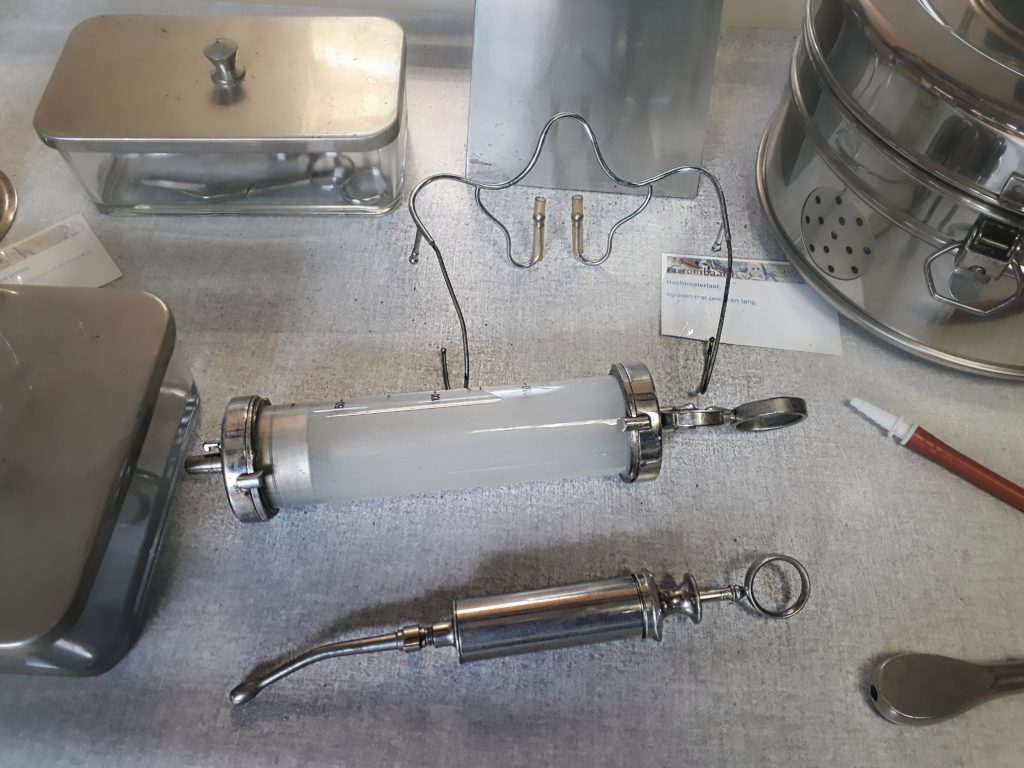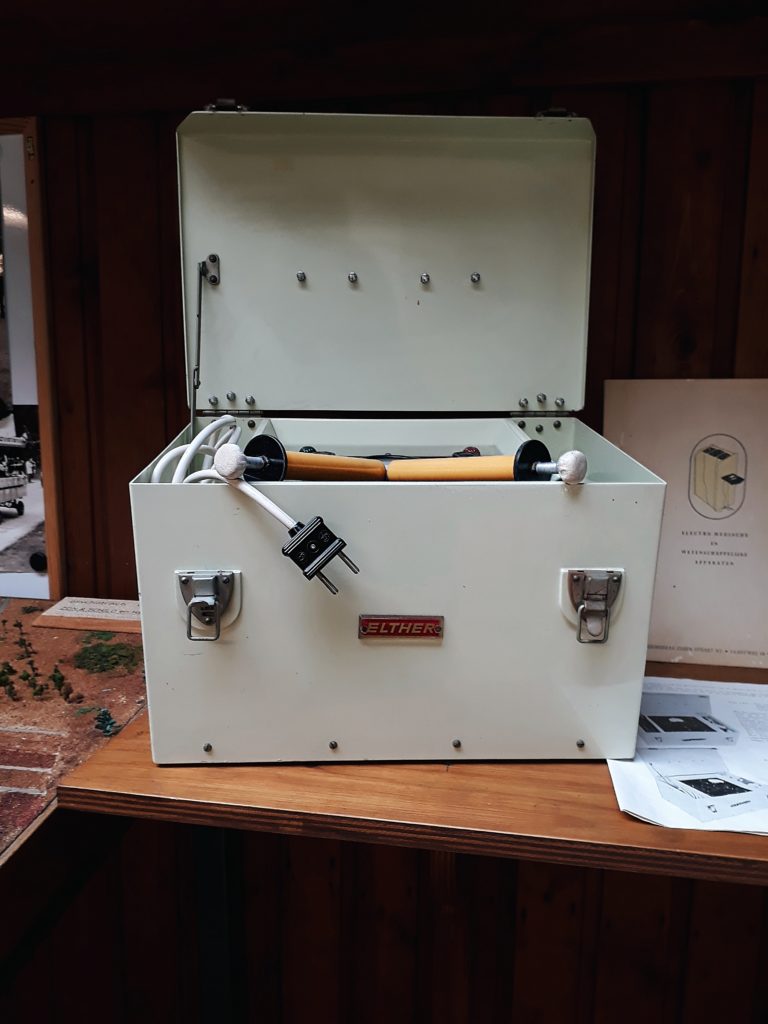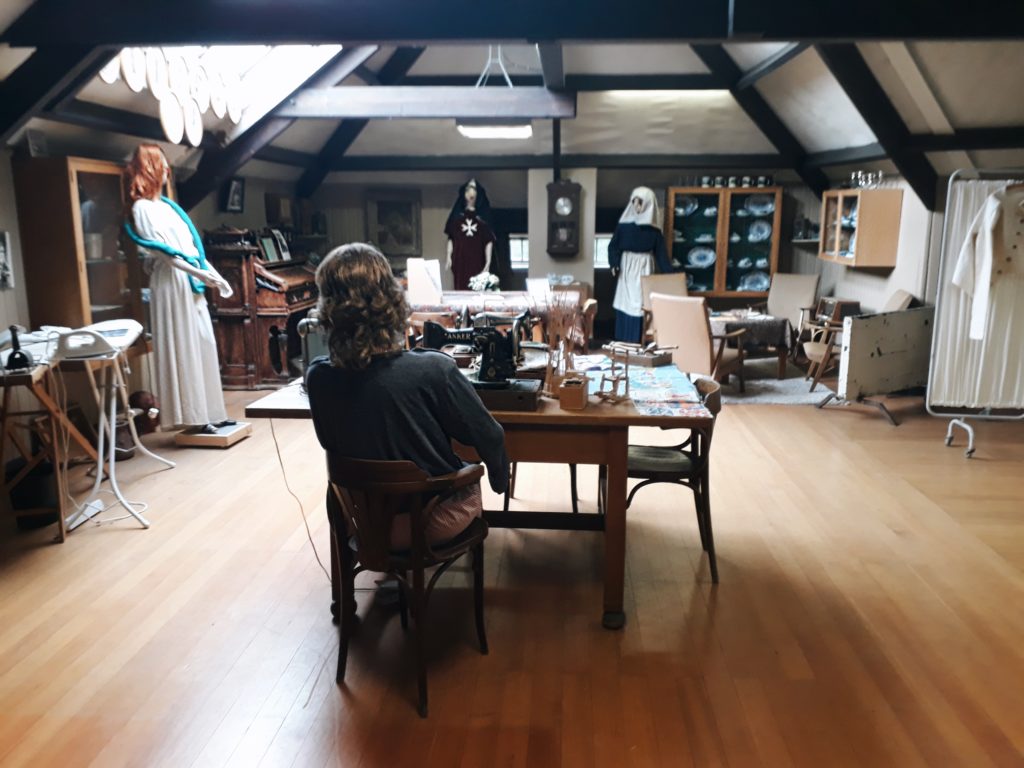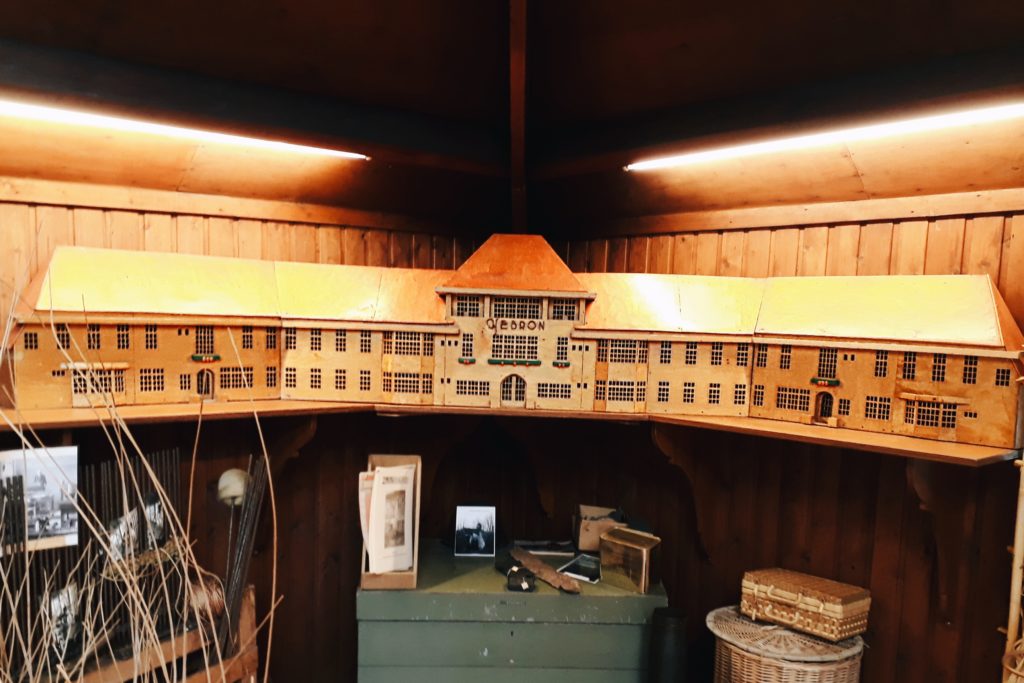When you enter the term psychiatric museum into your google search bar you will come across images of cages, restraint jackets and shackles. Psychiatric museums are often associated with the history of their gruesome methods of treatment and therapy. People are inclined to look negatively at the material culture of psychiatric exhibitions. Nowadays we can’t ignore the severity of these inhumane practices, back then it was part of the medical procedure. ‘People have the tendency to interpret the past on today’s term’.[1] A lot of mental health related museums tend to portray the history of mental health in a traditional and problematic way. As Catharine Colborne states: ‘Objects from this past are often framed by the discourse of the ancients institution and its more ‘progressive’ successor, modern psychiatric treatments’.[2] The objects are a part of a linear clinical history rather than a cultural or social history. It is important to see that objects of psychiatric museums do not only tell the story of medical progress, but also include narratives of the people involved.
Museum Grombaard
A small History and initial principles
To see if psychiatric museums are trying to incorporate different histories I went to Museum Grombaard, the psychiatric museum in Amersfoort. Grombaard means something along the lines of veteran or old-campaigner. The uniqueness of the museum already lies in its name. The museum was founded by former employees of Zon en Schild, a mental healthcare center that still exists. The exhibition is based on objects coming from the basements of the institution. Zon en Schild was founded in 1931 and has an impressive collection of medical materials. The museum itself came to life in 1986 and was reinvented in 2010 by a new committee. No professional museum-makers were involved. Although they consulted museum Het Dolhuys. Their new slogan was: ‘‘Wie zijn geschiedenis niet kent, kan het heden niet doorgronden noch zijn toekomst richting geven’.[3] On the website you can read that the volunteers want to preserve the history of the institution. The emphasis lies on the value of the collection for the broader history of psychiatry in the Netherlands. Another objective is to normalize psychiatry in society. The audience they try to reach out to consist of staff members, patients, family members and everybody who is interested. Have they achieved these goals?
The motto they formulate, gives the impression that the museum adopted the linear story of progress. It is true they have a wide range of medical objects which give insight into the developments within psychiatric healthcare. Variating from electric shock devises to restraint jackets; from pharmaceuticals to surgical tools, the visitors come in contact with the ‘otherness’ of the past. More interesting to me were the narratives told through the objects about the life within the facility. It all starts with the volunteers.


The exhibition and the volunteers
The museum is still on the grounds of Zon en Schild. The attic of the main building has been converted to a ‘cabinet of curiosities’. There was only one other visitor. He was a current employee who was researching the history of the institute. With a cup of tea in our hands we sat around the desk in their office and talked about the history of the institute and the founding of museum but mainly about their own experiences. All the volunteers are retired employees. Remarkable is the amount of volunteers who worked as craftsmen. Only a few were actual nurses. My tour guide, Klaas, for example was an upholsterer. Their stories show that mental health institutions were communities within society. The deinstitutionalization of the psychiatric sector made their jobs redundant. Now they hire large companies for these kind of tasks. The volunteers mentioned that the facility nowadays is less personal and less involved. A tendency that reinforced the progressive storytelling in mental healthcare museums.[4]
When I asked Klaas about his own motivation he answered he wants to preserve all the objects, otherwise they would have been thrown away. It sometimes sounded as an antiquarian approach: ‘preserving for future generations’. [5] The term antiquarian has a negative connotation as it is frequently associated with nostalgia or small-mindedness, but the volunteers in Grombaard were very well informed. They believe the museum had something to offer. The tour was informative and you could interact with every single objects. As a visitor you feel a connection with the object and your tour guide. The collection is somewhat elective, but this was also one of its strengths. It told many different stories and I don’t believe they were all intentionally.


Like I mentioned the most fascinating objects are the objects that aren’t medical. In the hall stands a wooden bench made by the carpenter a hundred years ago. There is artwork made by patients. They show the garments of the nurses throughout the years, some made by patients. Remarkable are the photobooks that show their activities on public holidays. They store the instruments of their marching band. A lot of these objects contained personal stories that reached beyond their medical importance. These objects display the social and cultural meanings of living in the facility, a community life. It normalizes the history of psychiatry. Al the volunteers had lovely memories of working at Zon en Schild. It is interesting to see that the volunteers, in a way, believe circumstances were better back then. The public often only sees the gruesome side of psychiatric healthcare. The only downfall is that the exhibition only focuses on the movements of the personnel, not as much on the patients. Sharing stories of clients would provide different perspectives. It could give visitors more understanding on how mental illnesses work and how psychiatric institutions operate. They could broaden their audience by including these perspectives.

The right to exist
To my regrets I heard that the volunteers worry about the museums
future. All the volunteers are getting older and the workload is increasing. At
the end they asked me how I would change or arrange the collection. I told him
their collection of clinical objects was unique, but what made it even more
impressive were the stories told by their community. I almost forgot about the
cages, restrain jackets and the shackles.
Claartje America
[1] Carolyn Birdsall, Manon Parry and Viktoria Tkaczyk, ‘Listening to the MindAuthor(s)’, in: The Public Historian, Vol 37, No. 4 (November 2015), 47-72, 53.
[2] Catharine Coleborne, ‘Exhibiting Madness’: Material Culture and the Asylum’, in: Health and History, Vol.3, No. 2 (2001), 104-177, 105.
[3] Willem Noordanus, ‘Terugblik van mijn tijd bij de museumcommsie’ http://www.grombaard.nl/ , (15-9-2019).
[4] Birdsall, ‘Exhibiting Madness’, 105.
[5] Ibidem, 110.